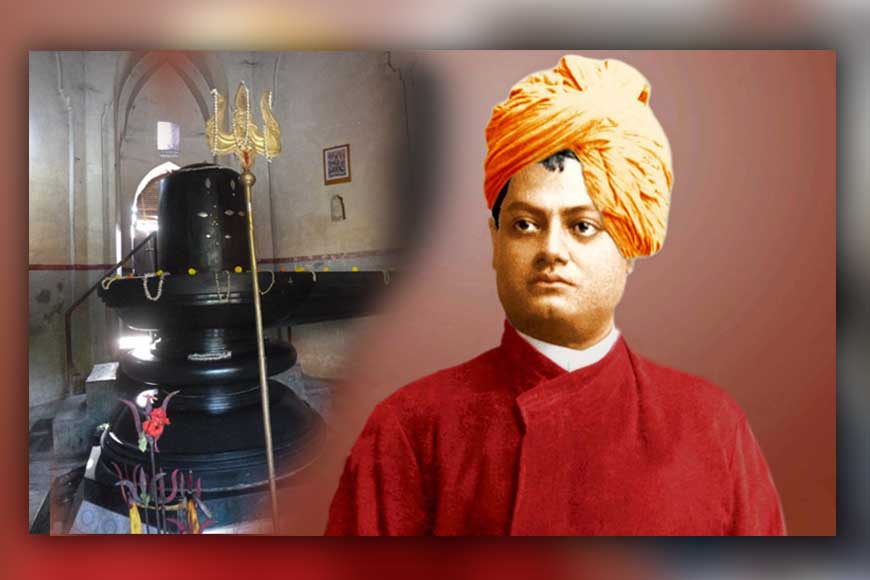How did Swami Vivekananda establish the scientific basis of Shivlinga

I have often wondered standing infront of the Shivlinga in our family temple, why does it have such a shape and why with the utmost religious fervor devotees keep pouring tons of milk on this ‘Linga.’ For any of you who have been to a Shiva temple must have found a stark similarity between the Linga of a male, or the male copulatory organ and the Joni of the female, the female organ for accepting the sexual desire. But that did not beat me, because Hinduism down the ages have always celebrated various forms of life in the utmost height of philosophy.
The usual image of Shivalingam placed on a circular base (known as Peedam), has thus given rise to various interpretations. Surprisingly, the worship of Shiva Lingam was not confined to India and Sri Lanka only. Even the word Lingam was referred to ‘Prayapas’ by the Romans. Such Shiva Lingam form statues have also been found in the archeological findings of Babylon and in Harappa-Mohenjodaro.
The philosophical explanation of a lingam is quite interesting. It is believed in Hindu religion that everything in the world arises out of a dome or a ball or a pindi, be it a tree which comes from a seed which is round, a child which comes from a cell which is round, all heavenly bodies, the minutest of cells that mostly have a spherical form. Similarly, Shivalingam consists of three parts --- bottom part which is four-sided remains underground, the middle part which is eight-sided remains on a pedestal. The top part, that is actually worshipped, is round. The height of the round part is one-third of its circumference. The three parts symbolize Brahma at the bottom, Vishnu in the middle and Shiva on the top. The pedestal is provided with a passage for draining away the water that is poured on the top. The Lingam symbolizes both the creative and destructive power of Lord Shiv. Swami Vivekananda described Shiva Lingam as the symbol of the Eternal Brahma citing Atharva Veda. He said: “It is a description of the infinite beginning and endless of the Eternal Brahma and refuted it as an imaginary invention.”
True to Vivekananda, Hinduism has always advocated religion as science. Science is a continuing effort to discover and increase human knowledge of the physical or material world through experiment and observation. The Lingam is shaped like an egg and represents the ‘Brahmanda’ or the cosmic egg. Shiva Lingam represents the totality of the ‘Cosmos’ and that in turn is being represented as a Cosmic Egg. Again, an egg is an ellipsoid, with no beginning or end.
A Shivalingam has a pillar with three marks and a disc beneath it, with a coiling cobra around the pillar. Danish scientist, Neils Bohr, had demonstrated in his atomic theory that molecules are made up of atoms which consists of proton, neutron and electron, all of which play a vital part in the composition of Shiva Lingam. One gets a view of the same in Sage Vyasa’s (author of Mahabharata) interpretation where he describes Lord Shiva as smaller than the sub-atomic particles, while greater than anything greatest. He is the cause of vitality, he is Timeless. He has no birth, no death. This refers to the conservation of energy forms. And Brahma, Vishnu, Shiva as the three intrinsic particles of the atom, the smallest part of a living matter.









